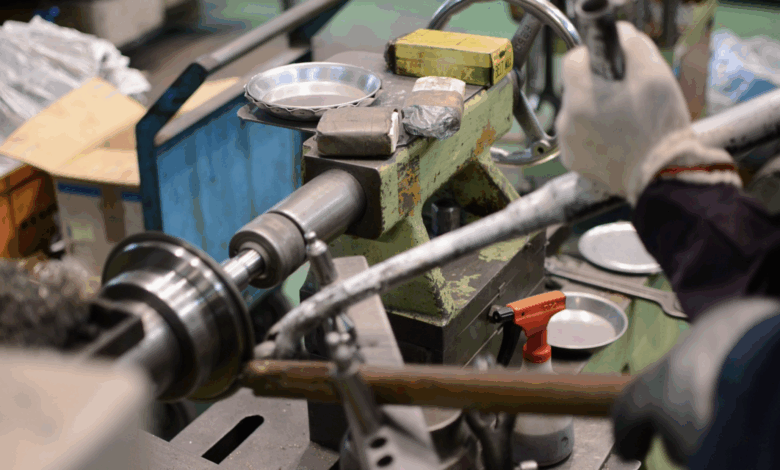
In manufacturing, existing systems are often the backbone of operations. The applications teams use every day are reliable, familiar and deeply integrated into workflows. They are still doing the job and doing it well. But running them on outdated operating systems (OSs) poses serious security and compliance risks.
When it comes to modernising infrastructure, these trusted tools can become incompatible or unsupported, leading to disruption, retraining or costly redevelopment.
Downtime costs can vary significantly, but manufacturers can face losing on average $22,000 (£17,000) per minute when the production line stops.
We worked with an automotive company that faced a tough decision: its critical component testing rigs were connected to Windows XP machines running 16-bit testing applications. These rigs were worth millions and still essential to its processes – but the software couldn’t run on modern Windows systems.
Should the company replace the rigs? Rebuild the applications? Or was there another way?
Running critical apps on unsupported systems does require action. Yet this doesn’t mean ripping up and rebuilding what you have. Essentially, if it ain’t broke, you don’t need to fix it – but you do need to modernise it.
The operational risks of outdated infrastructure
Long-enduring applications – often running on unsupported operating systems – still underpin key functions in many factories. These aren’t just back-office apps; they’re tightly integrated into production lines, logistics and control systems. Imagine: a 20-year-old calibration tool goes offline due to a Windows 11 upgrade attempt – no compatible version exists, halting quality assurance processes for days. This could cause line stoppages, missed deliveries and operational chaos for this period.
When an attempt to modernise a control app fails or its environment is compromised, the cost is not IT overhead – it’s idle lines, missed orders and tarnished trust. It’s why vulnerabilities in systems aren’t just an IT issue: they are a risk to production, IP and reputation. For example, unpatched systems can be susceptible to ransomware or failure, and if a critical app does fail, entire production lines can grind to a halt.
Moreover, the existing systems that manufacturers rely on handle a whole range of sensitive data, from source code and product formulas to design specs and machine configurations. These systems are prime targets for attackers precisely because they are unprotected. And even if production and IP are unaffected, a breach or failure can severely impact customer confidence, regulatory trust and market standing.
Where conventional modernisation methods fall short
Manufacturing applications often rely on a complex web of underlying components. These can be specific dynamic link libraries, registry settings, component object models, hardcoded file paths, or legacy system drivers — components that were never designed to be portable.
These dependencies are typically tightly coupled to the original OS and hardware environment. As such, they make older apps notoriously difficult to modernise with conventional tools like traditional containerisation (e.g., Docker) or virtualisation (e.g., VMware, Hyper-V). Why exactly do they fall short?
Both containerisation and virtualisation assume a clean, modular architecture – and they work well for modern apps built with portability in mind. But while they help in moving away from physical infrastructure, neither solves the real problem for manufacturers using older apps.
Essentially, they don’t reduce risk — they just move the old environment into a new wrapper. This is because they struggle when faced with:
As a result, containerising or virtualising long-running apps can lead to partial functionality, instability, or outright failure, especially in complex manufacturing environments where uptime is critical.
Modernising what’s already there
Traditional modernisation methods assume the app and its dependencies are modular, replaceable and OS-agnostic — but older apps aren’t. Therefore, to address this gap, manufacturing companies need software that can capture and package not just the application but all of its environment-specific dependencies too. This preserves the exact behaviour of the original system while allowing it to run securely on modern, supported infrastructure — all without extensively rewriting or refactoring the code, or needing containers and virtual machines at all.
The automotive company facing its tough decision took on this exact approach. Rather than replace the rigs or rebuild the applications, they packaged the apps from their XP environment and redeployed them on the latest Windows desktops, preserving both their investment and their testing capability.
The manufacturer was also dealing with the limitations of being tied to specific Windows XP machines due to a lack of knowledge of the application and missing install media. Specifically, they had an application that was only installed on a single machine.
Working with our packaging solution meant this application could now be issued using standard Windows deployment software like Intune across all machines in the room, including laptops. Removing this single point of failure significantly enhanced operation resilience, flexibility and efficiency, while completely removing risks around the failure of the critical hardware.
Reframing modernisation
Existing applications are critical to manufacturers and their operations. But the risks of running them on unsupported OSs means the cost of doing nothing and not modernising systems is a ticking time bomb.
With these risks crossing into operational, financial and reputational domains, this is now a C-suite priority. Modernisation has to be positioned as a business continuity imperative, not just a cost-saving, compliance-driven initiative. But with so many hidden dependencies, these apps need to be modernised while keeping them running and secure.
By redeploying existing applications onto modern OSs without the need for containerisation, virtualisation or code changes, manufacturers can keep vital operations ticking over while, crucially, securing their systems. This empowers them to upgrade their infrastructure without replacing what still works.
Modernisation is no longer about chasing the latest tech — it’s about defending what matters most: uptime, security and customer trust.





